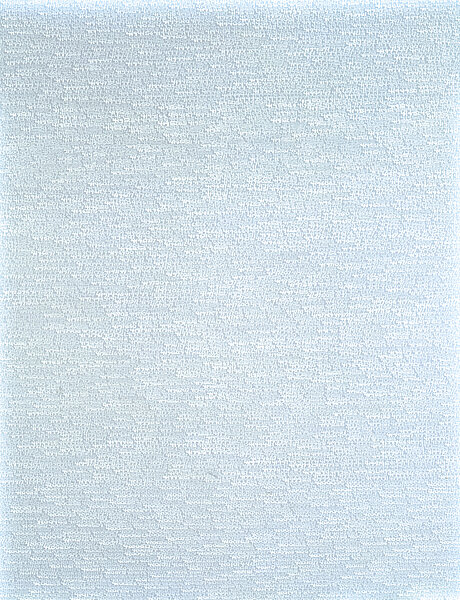
Opalka, Roman
OPALKA 1965/ 1 -∞ (4185294 - 4207974, 4207975 - 4232327, 4232328 - 4253355)
OPALKA 1965/ 1 -∞ (4185294 - 4207974, 4207975 - 4232327, 4232328 - 4253355)
1965
| Object description | Acrylic on canvas |
|---|---|
| Object category | painting |
| Material |
Painting layer:
acrylic paint
Support:
canvas
|
| Technique |
Object:
acrylic painting
|
| Dimensions |
Object:
height: 196 cm,
width: 135 cm,
depth: 3,2 cm
|
| Year of acquisition | 1995 |
| Inventory number | ÖL-Stg 375/0 |
| Creditline | mumok - Museum moderner Kunst Stiftung Ludwig Wien, Leihgabe der Österreichischen Ludwig-Stiftung |
| Rights reference | Bildrecht, Wien |
| Further information about the person | Opalka, Roman [GND] |
| Literature |
Genau und anders :Mathematik in der Kunst von Dürer bis Sol LeWitt Numbers at Work. A Cultural Perspective Zeit/Los Passage d'Europe. Réalités, références Passage Europe. Realities, References. A Certain Look at Central and Eastern European Art Museum der Wünsche Der Zahlen gigantische Schatten. Mathematik im Zeichen der Zeit Die Kraft des Alters.Aging Pride |
In 1965 Roman Opalka decided to devote his life to the realisation of a unique project, to record each and every day of his life and every moment of the act of painting. In that year he created the first of his so called “details” by placing into the left of the corner of the canvas the number one. And continuing his count until the entire painting is filled with rows of numbers. The next painting begins where the previous one left off. These number paintings are accompanied by photographic black and white self portraits, which are taken at the end of each working day, and show the artist’s slowly aging face with always the same expression. From that moment on Opalkas life had quite literally been inseparably linked with his work as an artist, because the process of the creation of his paintings and photographs corresponded with each passing day in his life. The painted numbers draw a clear picture of the irreversibility of time which passes in only one direction, comparable to an unstoppable countdown set in motion by the artist himself. Thus the traces of a whole lifetime are inscribed in the abstract numbers and thereby also it’s inevitable end – death- which Opalka viewed as the logical consequence of the completion of his work. He found a radical formulation for the unity of his person and his life’s work: “I have planned a work that plans my life.” On August 6, 2011, Roman Opalka completed his work.
© mumok – museum moderner kunst stiftung ludwig wien



